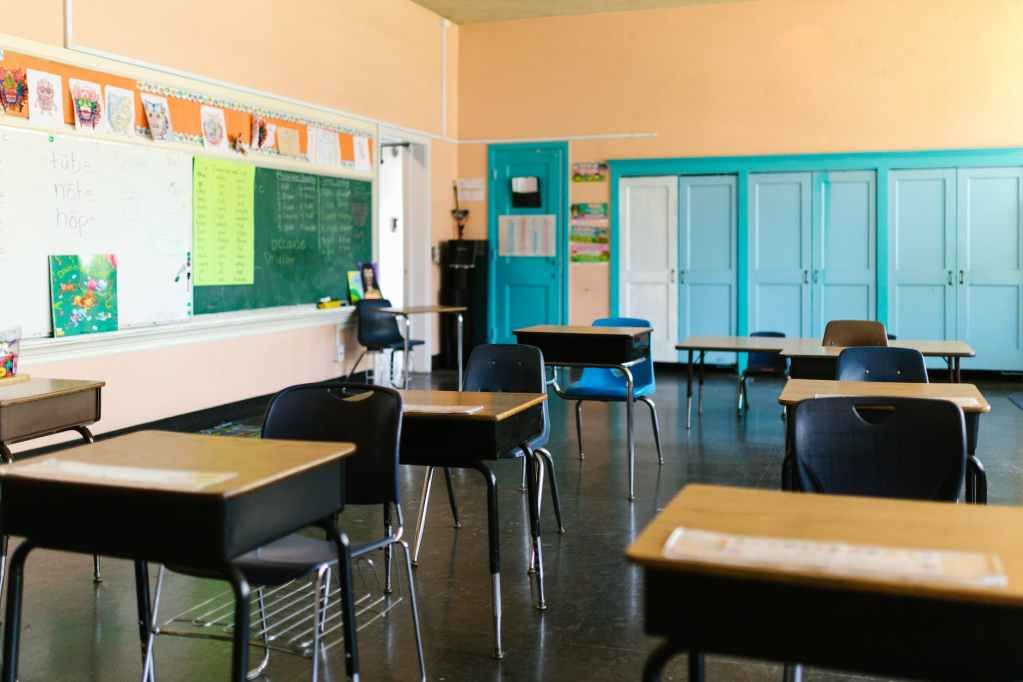Black and Hispanic households consistently saw lower cash balances and relative gains during pandemic

Black and Hispanic households consistently maintained lower median cash balances than their white and Asian counterparts during and post-pandemic, according to a new JPMorgan & Chase Co. comprehensive Household Pulse study.
Placing a spotlight on American households’ financial landscape, the financial giant analyzed administrative banking data to track the cash balance of around nine million Chase customers from January 2020 to March 2023.
Through financial analysis, Chase provided an important glimpse into the economic trajectories of diverse households by revealing stark cash balance discrepancies among its customers based on race and ethnicity.
The study underscored that the imbalances are not merely numerical; they also reflect the broader dynamics of the American socioeconomic fabric.
Black and Hispanic households saw more balance gains during the pandemic, especially when the government provided economic impact payments and expanded unemployment insurance.
However, study authors emphasized that the pandemic’s financial effects were not evenly distributed across all demographic groups.
Despite reports of higher income growth for Black and Hispanic individuals before and during the pandemic, there was a significant difference.
Black and Hispanics maintained cash buffers substantially below their white and Asian counterparts.
The authors noted that existing disparities defied the expectations that predicted higher income growth would bridge the gap.
The study showed that households’ combined checking and savings balances decreased in all income quartiles in the second half of 2022.
But the trend was reversed in March 2023, as tax returns began flowing in, providing a much-needed boost to many households’ financial standings.
As of March 2023, a stark divide was apparent between income quartiles.
The highest income quartiles saw median balances of approximately $9,000, while the lowest struggled with balances of around $1,300.
That represented a substantial decrease from the pinnacle observed in April 2022 post-tax return distributions, where balances stood at approximately $10,700 and $1,400, respectively.
Further data dissection underscored the persistent cash balance gap among racial and ethnic groups.
Despite the relative gains made during the pandemic, Black and Hispanic families consistently faced lower median cash balances than their white and Asian counterparts.
Peak balances for Black and Hispanic families in April 2021 reached $4,300 and $4,600 respectively.
In 2021, there was a consistent decline in the numbers.
In April 2022, Black families reached about $3,200 and Hispanic families reached roughly $3,500, and that was due to tax season.
In March 2023, balances for both groups slipped below $3,000, a figure approaching their respective pre-pandemic levels.
Click here to view the full study.
The post Black and Hispanic households consistently saw lower cash balances and relative gains during pandemic appeared first on New York Amsterdam News.
You Can Get Free Soft Serve From Carvel This Week
A glance at the NYC forecast shows this week is supposed to be a hot one, and though us New Yorkers are quite experienced with dealing with the dog days of summer, we’d never say no to to receiving some much needed relief from the heat.
Thankfully Carvel hears us, and this week they’re saving us by giving away thousands of free soft serve treats!
The giveaway comes not only as a way to honor National Soft Serve Day, but also to celebrate Carvel’s nearly century-long history.

Almost 90 years ago, during Memorial Day weekend in 1934, Carvel’s Original Soft Serve ice cream was created in New York after Tom Carvel’s ice cream truck broke down in the summer heat.
According to their website, the truck got a flat tire causing Carvel to pull over and begin selling a slightly melted version of his ice cream. Much to his surprise, people preferred it softer. And, well, the rest is sweet, sweet history.
And this week they’ll be giving away their soft serve treats for free!
Those who head to one of their NYC locations on Saturday, August 19, will get a BOGO cup or cone of any flavor of their choosing (extra toppings excluded). Those who can’t make it that day can head to a location between Friday, August 18 and Sunday, August 20 for a “double the fun” limited-time double cone while supplies last.
And while this is a great, mouthwatering deal, do you really think Carvel would stop celebrating National Soft Serve Day there?! Of course not!

Carvel will also be popping up around NYC for special National Soft Serve Day experiences and activations, including:
- Empire State Building Treats – Thursday, August 17, 11 a.m. – 2 p.m.
Sweet tooths can enjoy Carvel soft serve and get free swag on the observatory atop the Empire State Building. Soft serve treats will be available on a first come, first serve basis. Learn more here.
- Fudgie + Carvel’s Truck – Friday, August 18
Catch Fudgie the Whale and the Carvel ice cream truck traveling around NYC handing out free soft serve! Fans can follow the stops on Carvel’s Twitter and Instagram.
- Softest Cruise Ever – Saturday, August 19, beginning at 11:55 a.m.
Relax and unwind during an NYC ferry trip with plush pillows and a soft serve themed experience while enjoying Carvel’s soft serve. While aboard, passengers might even spot Carvel’s beloved mascot Fudgie the Whale. (East River route)
The post You Can Get Free Soft Serve From Carvel This Week appeared first on Secret NYC.
Mayor’s Op-Ed: The Essence Of The American Dream, Attainable Homes From The Harlem To Hollis
The #1 source in the world for all things Harlem.
New York City is home to people from all over the world. We may eat different foods and speak different languages but in the end, we all want things. We want jobs, good schools for our children, public safety, and a chance to live the American Dream. A central part of that dream is an…
The post Mayor’s Op-Ed: The Essence Of The American Dream, Attainable Homes From The Harlem To Hollis appeared first on Harlem World Magazine.
Cult-Followed Caffè Panna Is Coming To Brooklyn
With August‘s heat gearing up for a steady week in the 80s, we’ve got some exciting news to cool you down!
Idolized Gramercy ice cream shop, Caffè Panna, is opening their second location in Greenpoint, Brooklyn, reports Commercial Observer.
Apparently, Caffè Panna signed a 4,700-square-foot lease at 34 Norman Avenue. Hungry visitors can expect doors to open by the spring of 2024.
“The cult-following behind Caffè Panna has been absolutely phenomenal, and we cannot wait to see the customers’ reaction to the Brooklyn location, which will be an evolution of the Caffè Panna offering that exists in their Gramercy home,” Taryn Brandes of tenant broker Brand Urban. “This is a major step forward in the company’s strategic growth.”

The mastermind behind the shop inspired by Italy’s gelato tradition is Hallie Meyer. She managed to acquire loyal customers after opening the first location a stone’s throw away from Gramercy Park in 2019.
With new flavors and sundaes offered daily, ice cream lovers can always expect the unexpected on the menu. More specifically, customers can trust that the shop’s seven classic flavors will remain on the menu, in addition to five inventive scoops that continuously rotate. You can keep an eye on their Instagram for daily flavors and special updates.
The current location is open from Wednesday through Friday at the corner of Irving Place and 19th Street.
The post Cult-Followed Caffè Panna Is Coming To Brooklyn appeared first on Secret NYC.
Millions of kids are missing weeks of school as attendance tanks across the US

SPRINGFIELD, Mass. (AP) — When in-person school resumed after pandemic closures, Rousmery Negrón and her 11-year-old son both noticed a change: School seemed less welcoming.
Parents were no longer allowed in the building without appointments, she said, and punishments were more severe. Everyone seemed less tolerant, more angry. Negrón’s son told her he overheard a teacher mocking his learning disabilities, calling him an ugly name.
Her son didn’t want to go to school anymore. And she didn’t feel he was safe there.
He would end up missing more than five months of sixth grade.
Across the country, students have been absent at record rates since schools reopened during the pandemic. More than a quarter of students missed at least 10% of the 2021-22 school year, making them chronically absent, according to the most recent data available. Before the pandemic, only 15% of students missed that much school.
All told, an estimated 6.5 million additional students became chronically absent, according to the data, which was compiled by Stanford University education professor Thomas Dee in partnership with The Associated Press. Taken together, the data from 40 states and Washington, D.C., provides the most comprehensive accounting of absenteeism nationwide. Absences were more prevalent among Latino, Black and low-income students, according to Dee’s analysis.
The absences come on top of time students missed during school closures and pandemic disruptions. They cost crucial classroom time as schools work to recover from massive learning setbacks.
Absent students miss out not only on instruction but also on all the other things schools provide — meals, counseling, socialization. In the end, students who are chronically absent — missing 18 or more days a year, in most places — are at higher risk of not learning to read and eventually dropping out.
“The long-term consequences of disengaging from school are devastating. And the pandemic has absolutely made things worse and for more students,” said Hedy Chang, executive director of Attendance Works, a nonprofit addressing chronic absenteeism.
In seven states, the rate of chronically absent kids doubled for the 2021-22 school year, from 2018-19, before the pandemic. Absences worsened in every state with available data — notably, the analysis found growth in chronic absenteeism did not correlate strongly with state COVID rates.
Kids are staying home for myriad reasons — finances, housing instability, illness, transportation issues, school staffing shortages, anxiety, depression, bullying and generally feeling unwelcome at school.
And the effects of online learning linger: School relationships have frayed, and after months at home, many parents and students don’t see the point of regular attendance.
“For almost two years, we told families that school can look different and that schoolwork could be accomplished in times outside of the traditional 8-to-3 day. Families got used to that,” said Elmer Roldan, of Communities in Schools of Los Angeles, which helps schools follow up with absent students.
When classrooms closed in March 2020, Negrón in some ways felt relieved her two sons were home in Springfield. Since the 2012 shooting at Sandy Hook Elementary School in Connecticut, Negrón, who grew up in Puerto Rico, had become convinced mainland American schools were dangerous.
A year after in-person instruction resumed, she said, staff placed her son in a class for students with disabilities, citing hyperactive and distracted behavior. He felt unwelcome and unsafe. Now, it seemed to Negrón, there was danger inside school, too.
“He needs to learn,” said Negrón, a single mom who works as a cook at another school. “He’s very intelligent. But I’m not going to waste my time, my money on uniforms, for him to go to a school where he’s just going to fail.”
For people who’ve long studied chronic absenteeism, the post-COVID era feels different. Some of the things that prevent students from getting to school are consistent — illness, economic distress — but “something has changed,” said Todd Langager, who helps San Diego County schools address absenteeism. He sees students who already felt unseen, or without a caring adult at school, feel further disconnected.
Alaska led in absenteeism, with 48.6% of students missing significant amounts of school. Alaska Native students’ rate was higher, 56.5%.
Those students face poverty and a lack of mental health services, as well as a school calendar that isn’t aligned to traditional hunting and fishing activities, said Heather Powell, a teacher and Alaska Native. Many students are raised by grandparents who remember the government forcing Native children into boarding schools.
“Our families aren’t valuing education because it isn’t something that’s ever valued us,” Powell said.
In New York, Marisa Kosek said son James lost the relationships fostered at his school — and with them, his desire to attend class altogether. James, 12, has autism and struggled first with online learning and then with a hybrid model. During absences, he’d see his teachers in the neighborhood. They encouraged him to return, and he did.
But when he moved to middle school in another neighborhood, he didn’t know anyone. He lost interest and missed more than 100 days of sixth grade. The next year, his mom pushed for him to repeat the grade — and he missed all but five days.
His mother, a high school teacher, enlisted help: relatives, therapists, New York’s crisis unit. But James just wanted to stay home. He’s anxious because he knows he’s behind, and he’s lost his stamina.
“Being around people all day in school and trying to act ‘normal’ is tiring,” said Kosek. She’s more hopeful now that James has been accepted to a private residential school that specializes in students with autism.
Some students had chronic absences because of medical and staffing issues. Juan Ballina, 17, has epilepsy; a trained staff member must be nearby to administer medication in case of a seizure. But post-COVID-19, many school nurses retired or sought better pay in hospitals, exacerbating a nationwide shortage.
Last year, Juan’s nurse was on medical leave. His school couldn’t find a substitute. He missed more than 90 days at his Chula Vista, California, high school.
“I was lonely,” Ballina said. “I missed my friends.”
Last month, school started again. So far, Juan’s been there, with his nurse. But his mom, Carmen Ballina, said the effects of his absence persist: “He used to read a lot more. I don’t think he’s motivated anymore.”
Another lasting effect from the pandemic: Educators and experts say some parents and students have been conditioned to stay home at the slightest sign of sickness.
Renee Slater’s daughter rarely missed school before the pandemic. But last school year, the straight-A middle schooler insisted on staying home 20 days, saying she just didn’t feel well.
“As they get older, you can’t physically pick them up into the car — you can only take away privileges, and that doesn’t always work,” said Slater, who teaches in the rural California district her daughter attends. “She doesn’t dislike school, it’s just a change in mindset.”
Most states have yet to release attendance data from 2022-23, the most recent school year. Based on the few that have shared figures, it seems the chronic-absence trend may have long legs. In Connecticut and Massachusetts, chronic absenteeism remained double its pre-pandemic rate.
In Negrón’s hometown of Springfield, 39% of students were chronically absent last school year, an improvement from 50% the year before. Rates are higher for students with disabilities.
While Negrón’s son was out of school, she said, she tried to stay on top of his learning. She picked up a weekly folder of worksheets and homework; he couldn’t finish because he didn’t know the material.
“He was struggling so much, and the situation was putting him in a down mood,” Negrón said.
Last year, she filed a complaint asking officials to give her son compensatory services and pay for him to attend a private special education school. The judge sided with the district.
Now, she’s eyeing the new year with dread. Her son doesn’t want to return. Negrón said she’ll consider it only if the district grants her request for him to study in a mainstream classroom with a personal aide. The district told AP it can’t comment on individual student cases due to privacy considerations.
Negrón wishes she could homeschool her sons, but she has to work and fears they’d suffer from isolation.
“If I had another option, I wouldn’t send them to school,” she said.
____
AP education writer Sharon Lurye contributed from New Orleans; AP reporter Becky Bohrer contributed from Juneau. This story was reported and published in partnership with EdSource, a nonprofit newsroom that covers education in California. EdSource reporter Betty Márquez Rosales contributed reporting from Bakersfield.
___
The Associated Press education team receives support from the Carnegie Corporation of New York. The AP is solely responsible for all content.
The post Millions of kids are missing weeks of school as attendance tanks across the US appeared first on New York Amsterdam News.
Humpback Whales Were Recently Spotted In NYC Waters
Shortly after dozens of dolphins were seen near the Verrazzano-Narrows Bridge, humpback whales were spotted swimming with against the backdrop of the NYC skyline.
Scientists from the Wildlife Conservation Society (WCS) shared photos of the majestic creatures on a sunny Wednesday, August 2, which were taken just five miles from the New York Aquarium in Coney Island.
And according to a tweet from the WCS, they were even met with dolphins and a young fin whale as well.
The WCS team even got in the water with the whales, “identifying individual ones, recording their behavior, and collecting tissue samples for analysis,” reports ABC 7, as part of their Ocean Giants Program.
According to officials, this type of research will help to “establish important baselines about whales off the coast of New York and New Jersey.”
Whale species including humpback, fin, minke, and North Atlantic right whales have been sited off of the NYC coast more frequently over the past few years, according to 6SqFt. Though, sadly, they’re at risk of things like entanglement in fishing lines and nets, getting struck by ships, and their habitat being changed.
However, through the WCS’ conservation work, they’re helping to guide and inform fisheries and management policies to “protect and restore threatened species and habitat, encourage smart ocean planning to ensure a place for wildlife in our busy waters, and build ecological resilience in nearshore and river habitats.”
You can learn more about the Wildlife Conservation Society here.
The post Humpback Whales Were Recently Spotted In NYC Waters appeared first on Secret NYC.



